student projects
Even though the Independent@Home project has ended, enthusiastic students interested in doing a final project in the area of assisted living and/or smart home environments are still encouraged to contact Martijn Vastenburg. Projects can be focused on both technical aspects (system intelligence) and interaction design aspects.
recent projects
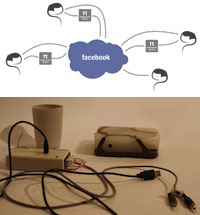 |
Designing Physical Social Media Master’s project, Stefan Veen, 2010/11. To fulfill social needs and to keep in touch with ones social network, people are increasingly using mediated communication and social media. This project investigated how physical products applied to social networking sites can make a group of extended socials feel more connected. This was done by building and testing physical interactive prototypes which were provided to a group of extended socials and were connected to Facebook. The prototypes enabled the participants to share samples of sound from their direct environment and listen to the samples of others. The prototype also provided the users with feedback about the activities concerning their samples shared on Facebook. The shared samples of a rich medium (sound), containing contextual cues created a sense of ‘involvement’ and contributed to the feel of connectedness of the audience (other Facebook users). Feedback about activities concerning the shared samples created ‘social awareness’ of the audience and contributed to the feel of connectedness of the device using participant. Furthermore, the possible appearance of samples on the social networking site resulted in an increased and continuous awareness of the co-participants. |
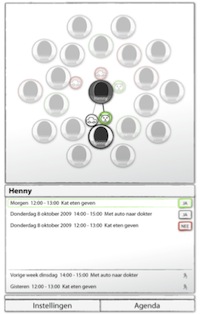 |
CommunityNet: Mediating Care at the Local Community Level Master’s project, Bas Stroomer, 2009-2010. Community care is a key ingredient of succesful independent living. Neighbours, family and friends are generally willing to help each other, but there appear to be barriers towards asking for help. CommunityNet aims to bring together family and friends in a community system, and facilitate the match-making process. A user- centered design process was followed to find a product concept which appeals to the target user group and which addresses the user needs. The concept was evaluated in a field test, which showed success in lowering the barrier towards asking multiple contacts for support. Participants indicated that they preferred using CommunityNet compared to face-to-face contact and telephone when support is not urgent. Since participants indicated problems building their network, the next step will be to integrate an automated mach-maker facility. |
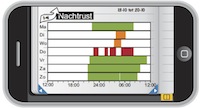 |
Remote monitoring tool for informal caregivers Master’s project, Matty Cruijsberg, 2009/10. Senior citizens increasingly like to live independently as long as possible. At a certain point in time, they need support in doing so. This support can be given by professionals but also by family and friends (informal caregivers). Without proper communication tools, it can be hard to remotely judge the situation of people in need of care. This project aims to create a web-interface that enables non-professional care-givers to check the status of people in need of care. For example, a daughter could easily see when her mother is in need of extra care, and act appropriately. |
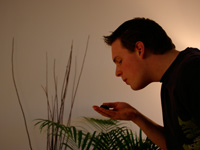 |
Design a tool that supports social connectedness for seniors by designing for specific social profiles Master’s project, Dick Rutten, 2009. A research through design approach is used to evaluate a vision and presumptions regarding the topics social connectedness and social profiles. Starting point for these profiles is a senior person who is still able to support himself most of the time. This group, in general, is interesting to explore because they are at the point in life where loneliness/belonging becomes an important parameter in the quality of life. |
 |
ScatteredConnected; designing a user aware system with a sense of security Master’s project, Hester Anderiesen, 2008/09. Monitoring the daily lives of elderly might arouse a feeling known as the "Big Brother is watching you…" phenomenon. The awareness of someone who always keeps an eye on you can also be experienced as "loving and caring". Providing elderly a secure and warm base will contribute to their self-confidence. This confidence will encourage the aged to perform their homely tasks as they always did. By designing an user aware system with a ‘sense of security’, this project will indirectly contribute to the independence of elderly at home. |
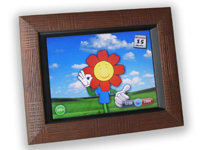 |
Persuasive activity-aware service for elderly people who need to exercise more Master’s project, Inaki Merino Albaina. 2007/08. The goal of this project is to create an activity-aware service for the home that stimulates elderly people to improve their physical activity levels. More information online. |
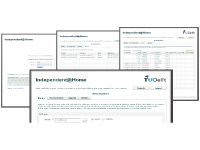 |
Middleware for activity-aware services Master’s project, Halldor Fjalldal, 2007/08. The goal of this project was to create middleware that simplifies the development of activity-aware services for the home. A web-based toolkit was developed, which enabled the configuration and management of services and sensors. |
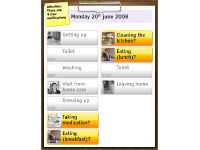 |
Activity journal Master’s project, Niels Bovendeur, 2008. The main goal of this project was to create an easy-to-use activity-labeling interface that enables elderly users to give feedback on an activity-aware system. The design concept was focused on accessibility, understandability and direct feedback, and has been tested in the field with multiple users. |
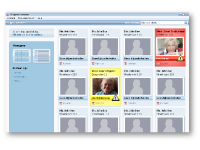 |
Web-based activity monitor for professional care givers Master’s project, Robbert Vroegindeweij, 2007/08. The main goal of this project was to create a web-based activity monitor for professional care givers. The web interface shows domestic routines of care clients; based on this information, care givers can adapt their work schedule to actual client needs. |
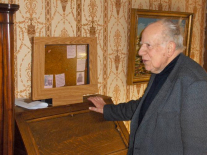 |
Designing an interaction metaphor for an ambient activity-aware service platform for elderly at home Master’s project, Erwin van Veldhoven, 2007/08. The main focus of the assignment was to study human-product interaction concepts for the activity-aware service platform. An electronic bulletin board has been developed, targeted specifically at the elderly. A prototype has been tested in the field. |
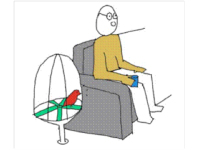 |
Smart Communicator Student projects for the course Interactive Technology Design, Spring 2007. Four groups of two students have developed and tested innovative interaction concepts for a video communication system for the elderly. The smart communicators were context-aware, and automatically adapted the interaction to the state of the environment. |




